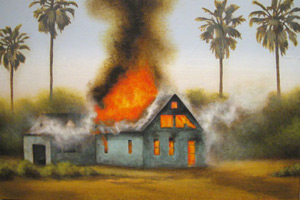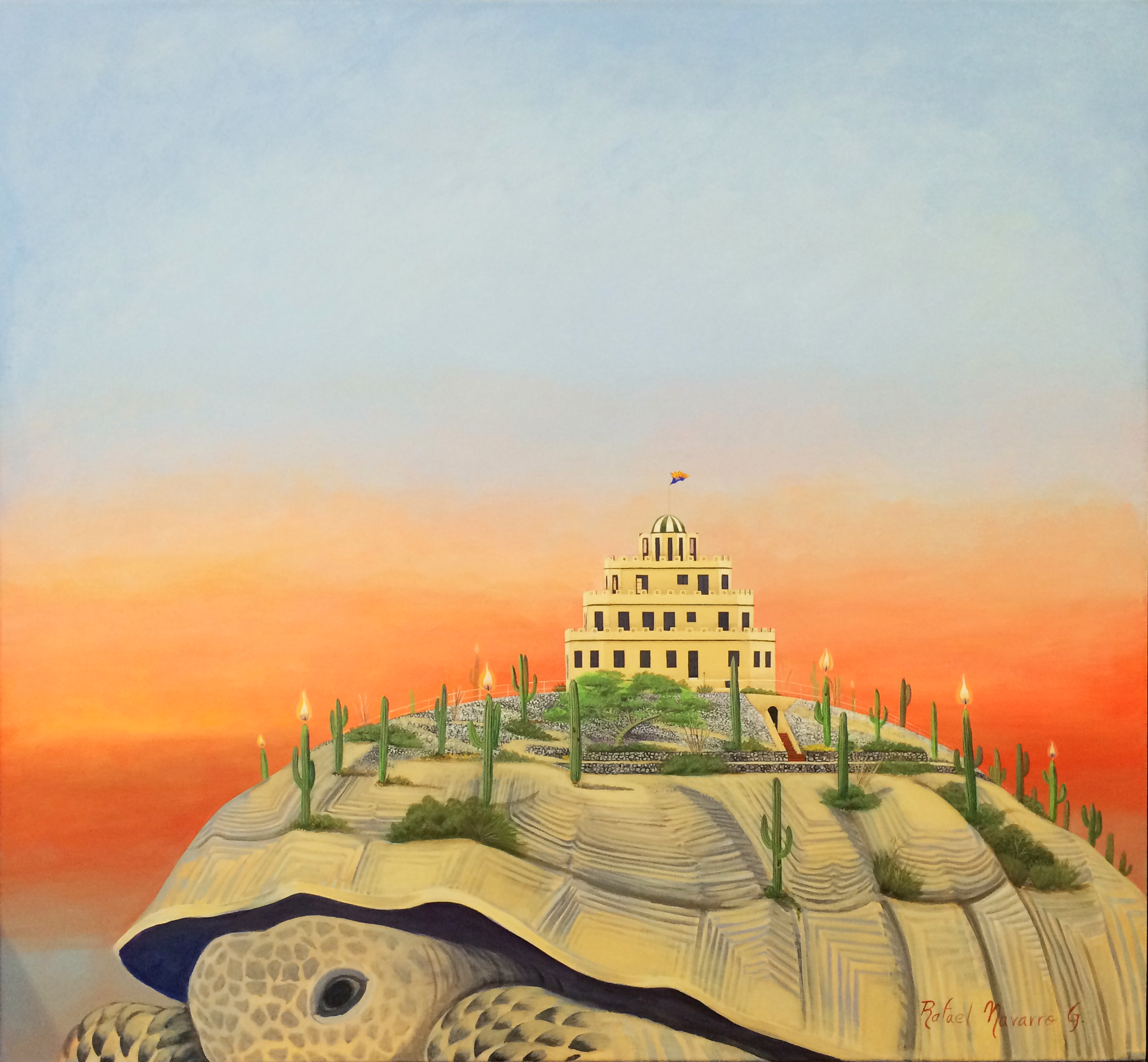James Angel and Melanie Corradi
October 21 – November 12, 2011
James Angel has watched the urban landscape of his native Phoenix morph over time. He notes that the place around him remains a work in progress, and in his paintings repeatedly references the fluidity of the environment in which we live. Phoenix is quick to change. It is a city under constant revision: buildings appear overnight, vacant lots are filled, older buildings are razed. In his paintings, Angel compresses time and places old imagery next to new in much the same way we might see a mid-century modern home adjacent to new condos. He couches harsh urban realities in the softness ofnostalgia and asserts the essentialness of artists and art in the urban community. Angel takes his visual cues from textured walls common in recently built homes, signs and other elements of urban landscapes. These are featured in his paintings, and graffiti—a modern, universal and distinctly urban art form—is celebrated.
Traces of Angel’s travels through Europe and various Latin American countries emerge in his work. He is fascinated with the ubiquity of graffiti, and the distinction between the artistry of various tag and sticker artists as opposed to meaningless vandalism. Angel deconstructs the language of urbanity, graffiti included, and revels in sights commonly seen on city blocks. His paintings relate to the collaborations of Warhol and Basquiat in which Basquiat’s street-aesthetic was applied over Warhol’s sleek corporate emblems—the ultimate metaphor for the organic growth of art in the urban environment.Angel gravitates to the DIY principle of the modern world, as manifest on Youtube.comand MySpace.
He investigates the way our newfound ability to capture and alter virtual space translates into our efforts to control and modify our immediate environment. His paintings are rife with the idea that this is our world, and we will choose how we shape it.



